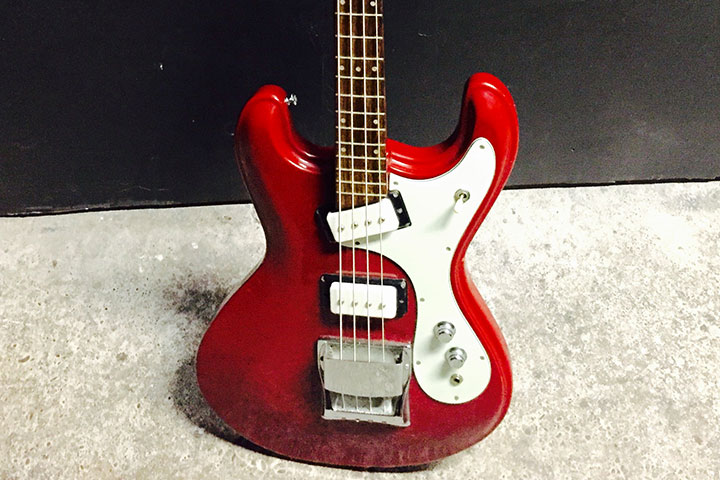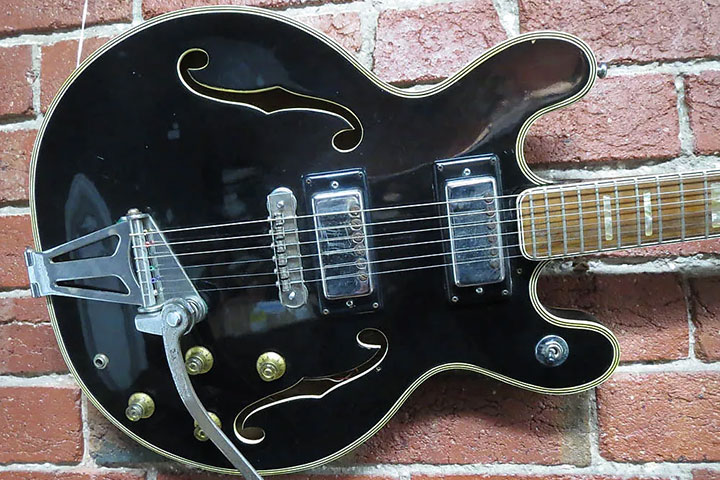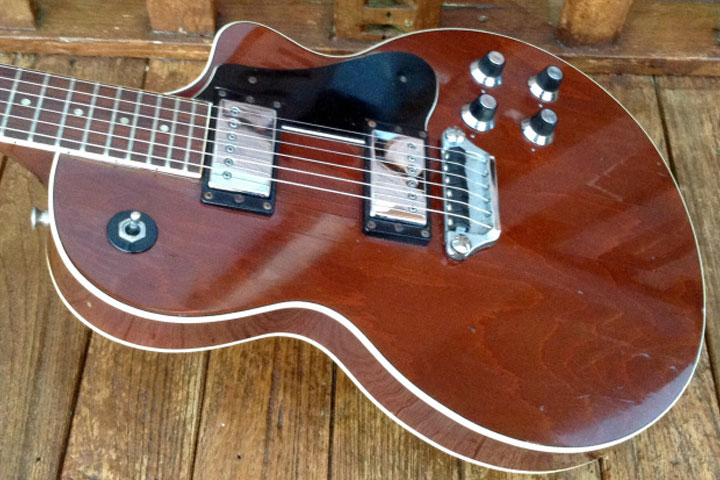A couple of months back, we published a guide to the many '60s guitar brands that often get mislabeled under the general “Teisco” tag. As we learned then, there were all sorts of Japanese makers in that era engaging in a veritable arms race for who could market the wildest designs resulting in one of the most intriguing and confusing chapters in all of vintage guitar history.
Today, we're revisiting this realm with a look at ten of the most exceptional vintage Japanese guitars for sale on Reverb right now. From beginner models and high–quality alternatives to popular American designs to a Yamaha that looks ripped straight from a Salvador Dali painting, these ten guitars represent the tip of the iceberg of the always fascinating arena of Japanese vintage guitars.
Found on ReverbCirca 1970 Elk Galaxy
Elk was one of the few guitar brands that was never built for export. The Elk guitars were considered top tier, manufactured by Miyuki Electronic Corporation to complement its line of professional amps.
Indeed, some of these guitars can go toe to toe with the American counterparts they draw their inspiration from. Elk had its own factory in Tokyo until it burned down around 1968. Manufacturing switched to the famed Matsumoku plant, alongside such other brands as Ibanez and Greco.

Teisco TG–64
The so–called monkey grip has been a key, defining feature of Steve Vai’s signature Ibanez since the late ‘80s, but Teisco beat Ibanez to the punch as early as the 1950s.
The 1960s TG–64 was a top tier model for Teisco, though it falls just a little short of the spectacular Spectrum 5s. The TG–64 can certainly be a player, with nice pickups, a great vibrato arm, and some very cool sound selections via the three rocker switches and tone cut control.
These guitars feature an offset body shape that should appeal to Jazzmaster or Jaguar players looking to add something a little different to their arsenal.

Intermark Sentinel
Intermark was the house brand for a US importer who ordered these guitars from Shinko Gakki. You will sometimes see these same models branded with the Pleasant name. Pleasant guitars are definitely a cut above the ubiquitous lower–end Teiscos and Kawais that other importers were bringing in en masse.
Featuring some strong Burns–like pickups, some controls discreetly hidden under the pickguard, and a strong laminate neck, these can be go–to guitars for the home or studio.

Guyatone LG–350T Sharp 5
The Sharp 5 was one of the first artist models produced in Japan, crafted to the specifications of Nobuhiro Mine of the band Sharp 5. The rumor is that these were actually built by Yamaha for Guyatone.
These guitars feature some stunning craftsmanship, with two very Jaguar–esque pickups, a unique tremolo, and some Mosrite–inspired knobs. The guitar itself is gorgeous, with a lovely German carve sliding into its offset with binding around the body, neck, and headstock.
These guitars are top quality players. As they were never made for export, it’s rare to see them outside of Japan.

Fujigen VN4
At first glance, this looks like a Kawai or Teisco, but it's actually a very early (approximately 1963) Fujigen guitar.
These guitars were exported to companies like Lindell. Lots of chrome, lots of rocker switches, all of your controls in the upper bout where you can accidentally thrash them — what’s not to love? A perfect staple for your new garage rock revival project.

Norma EG–470 Electric Guitar
Norma imported guitars from various Japanese guitar manufacturers, but this guitar came from a manufacturer that was actually better known for its accordions. That explains the beautiful sparkle red wrap finish.
Tombo only manufactured guitars from 1965 to 1967 during the height of the first electric guitar boom in Japan. Today, the company continues to make harmonicas and accordions.

Zen-On Morales Mosrite Hi Flyer Bass
The Morales line was Zen–On’s high–end copy model brand. They did a ton of Mosrite knock–offs, as well as some Gibson and Gretsch knock–offs.
The Morales guitars usually feature a two–piece mahogany sandwich body, giving them a bit of heft. The pickups on this one were manufactured by Nishin Onpa, the company that eventually became Maxon. These are some very playable guitars, and look cool to boot.

Idol PA-13
Manufactured by Teisco Gen Gakki, the Idol line of guitars arose from the split which occurred when the original Teisco company was bought by Kawai.
Promising to be a new line of high–quality guitars, Idol also manufactured amplifiers. However, a factory fire paired with the end of the electric guitar boom meant that the Idol brand disappeared after two and a half years.

Yamaha SG–2A
Right from the start of their guitar manufacturing, Yamaha did things their own way, with original parts, original shapes, and high–quality manufacturing.
The striking Yamaha SG–2A was the signature model of “The Blue Jeans” — a group fronted by legendary Japanese surf rock guitarist Terauchi Takeshi. This shape is more commonly known as “The Flying Samurai.”

Yamaha SG-45
Here’s another winner from Yamaha. The SG–45 has some of the classic elements of a more well–known American made guitar, but with a unique spin that’s all it’s own.
Luthiers love these guitars for their easily accessible back control covers, but curse them for their parts that were only manufactured by Yamaha for about a year–and–a–half. Today, those parts are nearly irreplaceable if lost or broken.

Japanese Vintage Guitars and Gear
